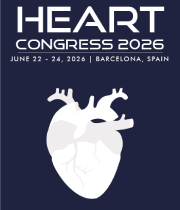Invasive and Non Invasive Cardiology
Non-invasive cardiology, in contrast, utilizes imaging techniques and diagnostic tests that do not require the insertion of instruments into the body. These methods include electrocardiography (ECG or EKG), echocardiography, nuclear cardiology, and cardiac magnetic resonance imaging (MRI). Non-invasive approaches are often employed for initial screenings, routine assessments, and ongoing monitoring of cardiovascular health. ECG, for example, records the heart's electrical activity, while echocardiography uses ultrasound to visualize the heart's structure and function. Non-invasive cardiology is valuable in detecting various cardiovascular conditions, such as arrhythmias, heart valve disorders, and congenital heart defects. While these methods are generally lower in risk and more accessible, they may have limitations in terms of the level of detail provided compared to invasive procedures. Non-invasive cardiology plays a crucial role in preventive care, early diagnosis, and long-term management of cardiovascular diseases, contributing to comprehensive and patient-centered cardiological practice.

Shuping Zhong
University of Southern California, United States
Ahdy Wadie Helmy
Indiana University School of Medicine, United States
Federico Benetti
Benetti Foundation, Argentina
Ishan Abdullah
George Washington University School of Medicine and Health Sciences, United States
Sana Tariq
Manchester University NHS Foundation Trust, United Kingdom
Achi Kamaraj
Royal Brisbane and Women’s Hospital, Austria




Title : Historical evolution from OPCAB to MIDCAB to mini OPCAB surgical technique and results
Federico Benetti, Benetti Foundation, Argentina
Title : Fats of Life, the skinny on statins and beyond !
Ahdy Wadie Helmy, Indiana University School of Medicine, United States
Title : Novel ways of cardiovascular risk assessment
Syed Raza, Awali Hospital, Bahrain
Title : Study of pathological cardiac hypertrophy regression
Shuping Zhong, University of Southern California, United States
Title : Personalized and Precision Medicine (PPM) and PPN-guided cardiology practice as a unique model via translational applications and upgraded business modeling to secure human healthcare, wellness and biosafety
Sergey Suchkov, N. D. Zelinskii Institute for Organic Chemistry of the Russian Academy of Sciences, Russian Federation
Title : Atypical takotsubo cardiomyopathy presenting as st-elevation myocardial infarction
Sana Tariq, Manchester University NHS Foundation Trust, United Kingdom